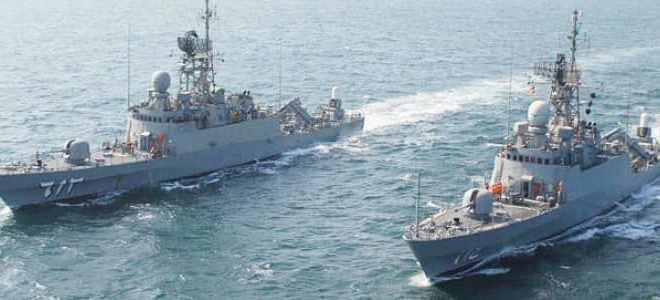The Commander of U.S. Naval Forces Central Command. Vice Admiral Jim Malloy. met with the commander of the Royal Saudi Naval Forces (RSNF) after the attacks on vital Saudi oil infrastructure to boost defenses against Iranian aggression. the U.S. Naval Forces Central Command said in a statement on Tuesday.
Vice Admiral Malloy traveled to Riyadh to meet with Vice Admiral Fahad al Ghofaily. as well as with U.S. Ambassador John Abizaid. on Sunday. September 29. to discuss regional efforts to boost defenses against Iran. the Central Command said.
“This visit was an opportunity to discuss our mutual efforts going forward to coordinate defense against provocation and attack.“ Vice Admiral Malloy said.
On September 14. the Abqaiq facility and the Khurais oil field in Saudi Arabia were hit by attacks. which resulted in the temporary suspension of 5.7 million bpd of Saudi Arabia’s crude oil production. or around 5 percent of global daily oil supply.
U.S. President Donald Trump. Secretary of State Mike Pompeo. and Energy Secretary Rick Perry all blamed Iran for the attack. Saudi Arabia has also pointed the finger at Iran.
Days after attacks on vital oil infrastructure in the Kingdom. Saudi Arabia said it had decided to join the U.S.-led maritime security coalition that aims to ensure freedom of navigation and safe passage through the Persian Gulf.
In an interview with CBS’s 60 Minutes aired on Sunday. Saudi Crown Prince Mohammed bin Salman warned of skyrocketing oil prices if the Iranian threat in the Persian Gulf isn’t contained. but said he hoped there wouldn’t be a military solution.
“If the world does not take a strong and firm action to deter Iran. we will see further escalations that will threaten world interests. Oil supplies will be disrupted and oil prices will jump to unimaginably high numbers that we haven’t seen in our lifetimes.“ the Crown Prince said via an interpreter.
 Iran Energy News Oil, Gas, Petrochemical and Energy Field Specialized Channel
Iran Energy News Oil, Gas, Petrochemical and Energy Field Specialized Channel




